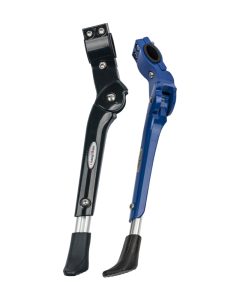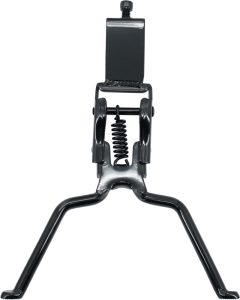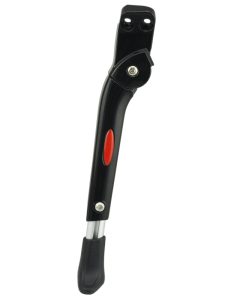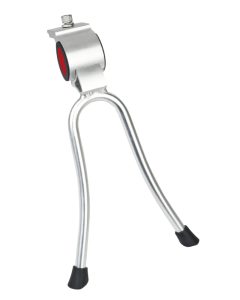Introduction
Kickstands are an essential accessory for bicycles, motorcycles, and even some scooters. They provide stability and convenience when parking these vehicles. In this comprehensive blog post, we will delve into the origins, various types, historical evolution, and offer guidance on selecting the right kickstand for your needs.

KK-10
Origins of the Kickstand
The kickstand, also known as a side stand, traces its origins back to the late 19th century. Initially, it was a simple, manually deployed device attached to bicycles. Its invention revolutionized the way cyclists parked their bikes, offering a convenient alternative to leaning them against walls or trees.
Types of Kickstands
Single-Leg Kickstands: These are the most common type of kickstand and are found on a wide range of bicycles. They consist of a single leg that extends down to support the bike’s weight.
Double-Leg Kickstands: Designed for heavier loads, such as cargo bikes or electric bikes, these feature two legs for increased stability. They are ideal for situations where the bike needs to be loaded or unloaded frequently.

KK-08
Center-Mount Kickstands: This type attaches near the bike’s bottom bracket and is centrally located. They offer stability and are commonly used on touring bikes and city bikes.
Rear-Mount Kickstands: Attached near the rear wheel, these provide a stable platform for the bike. They are often used on mountain bikes and some hybrids.
Adjustable Kickstands: These can be customized to suit different frame sizes. They are versatile and can be a good option if you have multiple bikes.
Historical Evolution of Kickstands
Over the years, kickstands have evolved significantly in terms of design, materials, and functionality. Early kickstands were made of steel and were manually deployed. With advancements in materials engineering, aluminum and other lightweight alloys became prevalent, contributing to reduced weight and increased durability.
Moreover, modern kickstands now incorporate features like adjustable length, quick-release mechanisms, and anti-scratch rubberized feet. These advancements enhance usability and make them suitable for a wider range of bicycles.
Choosing the Perfect Kickstand

KK-13
Consider Your Bike Type: Different types of bikes have varying requirements. For instance, a mountain bike might benefit from a rear-mount kickstand, while a commuter bike may be better suited with a center-mount option.
Weight Capacity: Ensure the kickstand can support the weight of your bike, plus any additional loads you plan to carry. This is particularly important for cargo bikes or those with panniers.
Adjustability: If you own multiple bikes or plan to change your bike in the future, an adjustable kickstand provides flexibility and convenience.
Material and Durability: Look for kickstands made from robust materials like aluminum or stainless steel. They are both lightweight and corrosion-resistant, ensuring longevity.
Ease of Installation: Choose a kickstand that is easy to install. Some models come with comprehensive installation guides, while others may require professional assistance.
Conclusion

KK-09
Kickstands have come a long way since their inception, evolving to meet the diverse needs of cyclists and motorcyclists. Understanding the different types and their applications can greatly enhance your riding experience. By considering factors such as bike type, weight capacity, adjustability, material, and ease of installation, you can confidently select the perfect kickstand for your specific requirements. Happy riding!
Recent Posts
- Doing Your Own Bicycle Repairs 2023-12-26
- Bike Pegs: Sticking Out for Style and Skills 2023-12-05
- How to choose the right grips for your bike 2023-11-22
- Electric Bicycles (E-Bikes): A Comprehensive Evolutionary Journey 2023-11-16
- Revitalizing Inventory: Customized Components for Bicycle Companies Facing Overstock Challenges 2023-11-09